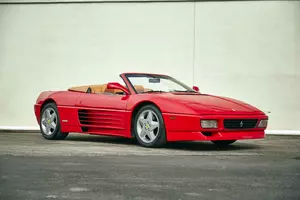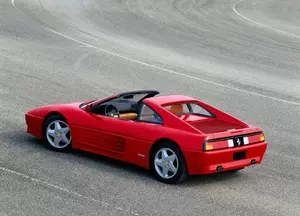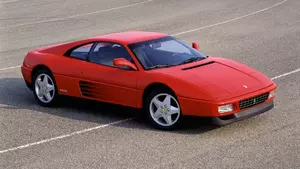
| Vehicle | Curb weight | Difference from world's smallest | Weight to power ratio | 0—60 mph acceleration ratio | Consumption ratio |
|---|---|---|---|---|---|
| 3.4 V8 32V |
1370 kg / 3021 lbs |
945 kg (2084 lbs) heavier | 4 kg to 1 hp | 274 kg/s (604 lbs/s) | - |
| Vehicle | 3.4 V8 32V |
|---|---|
| Curb weight |
1370 kg / 3021 lbs |
| Difference from world's smallest | 945 kg (945 lbs) heavier |
| Weight to power ratio | 4 kg to 1 hp |
| 0—60 mph acceleration ratio | 274 kg/s (604 lbs/s) |
| Consumption ratio | - |

| Vehicle | Curb weight | Difference from world's smallest | Weight to power ratio | 0—60 mph acceleration ratio | Consumption ratio |
|---|---|---|---|---|---|
| 3.4 i V8 32V |
1440 kg / 3175 lbs |
1015 kg (2238 lbs) heavier | 5 kg to 1 hp | 282 kg/s (622 lbs/s) |
101 kg/L (223 lbs/L) |
| Vehicle | 3.4 i V8 32V |
|---|---|
| Curb weight |
1440 kg / 3175 lbs |
| Difference from world's smallest | 1015 kg (1015 lbs) heavier |
| Weight to power ratio | 5 kg to 1 hp |
| 0—60 mph acceleration ratio | 282 kg/s (622 lbs/s) |
| Consumption ratio |
101 kg/L (223 lbs/L) |

| Vehicle | Curb weight | Difference from world's smallest | Weight to power ratio | 0—60 mph acceleration ratio | Consumption ratio |
|---|---|---|---|---|---|
| 3.4 i V8 32V |
1395 kg / 3076 lbs |
970 kg (2139 lbs) heavier | 5 kg to 1 hp | 263 kg/s (580 lbs/s) |
147 kg/L (324 lbs/L) |
| Vehicle | 3.4 i V8 32V |
|---|---|
| Curb weight |
1395 kg / 3076 lbs |
| Difference from world's smallest | 970 kg (970 lbs) heavier |
| Weight to power ratio | 5 kg to 1 hp |
| 0—60 mph acceleration ratio | 263 kg/s (580 lbs/s) |
| Consumption ratio |
147 kg/L (324 lbs/L) |